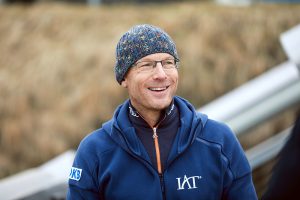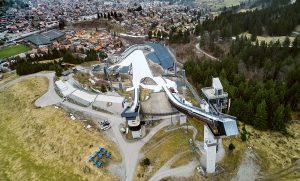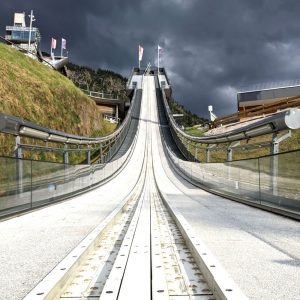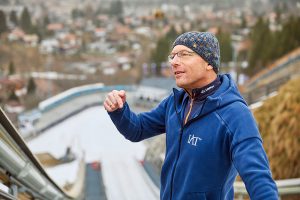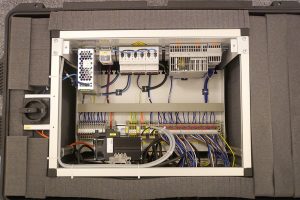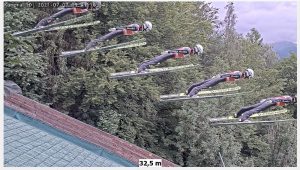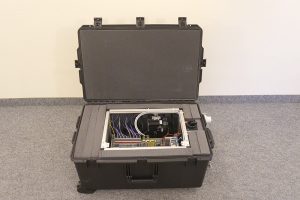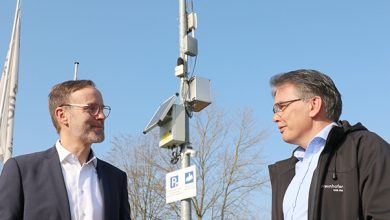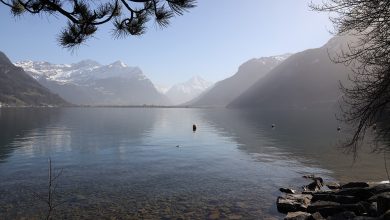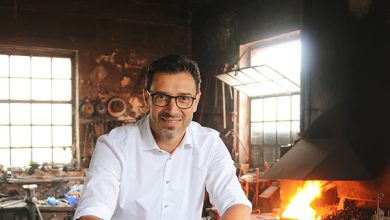Oberstdorf is actually a village like so many others along the Alps: picturesquely situated, perfectly developed for tourism and, especially in winter, overrun by skiing enthusiasts. The fact that the name nevertheless has a unique ring to it is due to two monumental buildings and its daredevil users.
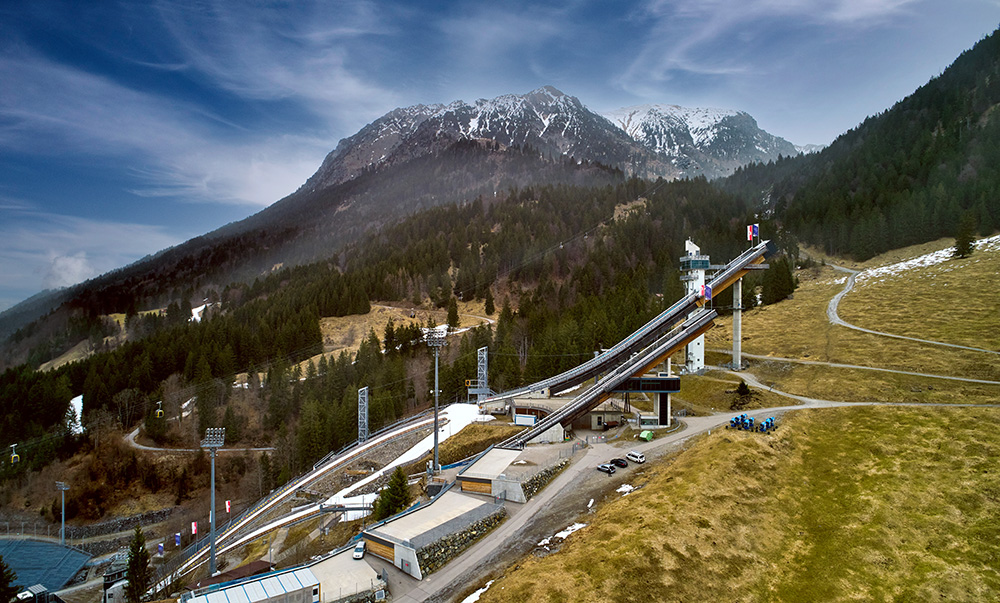
When the name comes up, most people don’t think of the alpine ski resorts of Nebelhorn, Söllereck or Fellhorn. Or of the fact that Oberstdorf is the southernmost municipality in Germany, with access to various high valleys and thus an Eldorado for mountaineers. But to the two ski jumping facilities above the village, which every year become the Mecca of ski jumpers and pilots.
Shadowjumper
Oberstdorf had already had a ski jumping facility since 1909. But the facility was not optimally placed, the jump was shone by the sun so that the snow on the artificial structure softened too quickly. So, after a few years, a new facility was built on a mountain that was more suitable in terms of its name: the Schattenberg. In 1926, the first ski jumping event took place on the newly built Schattenberg ski jump. At that time, the winning distance was 35 meters. An achievement that demands respect due to the equipment of the time, but would be an absolute disaster for Dr. Sören Müller today. The sports scientist, who holds a doctorate, and his team from the Institute for Applied Training Science (IAT) supervise the German ski jumpers and Nordic combined athletes.
We are at the Audi Arena with its normal and large ski jumps. Instead of mountains of snow, fine Sahara dust covers the area. Even at the large and normal hill, where we meet Dr. Müller, only a few remnants of white splendor fight against the spring sun. There is still almost dead silence here, while a few kilometers away hectic activity has broken out. The elite of ski pilots meet at the Heini-Klopfer-Skiflugschanze. But here, on the eastern outskirts of Oberstdorf, only the IAT team is busy checking their permanently installed analysis system. “We will travel to the ski jump later and set up the mobile system,” says Dr. Müller, setting the time frame.
Panoramic view
Fixed technology was installed at the large hill, so that the mobile unit remains in the trunk. Right next to it is the normal ski jump, which is complemented by three children’s and youth ski jumps. When the jumpers on the ski jump thread their skis into the icy jump tracks, they have an impressive view of Oberstdorf. Or a frightening one, depending on your disposition.
“The jumpers only see the hill up to the jumping table. They can’t see everything that comes after that,” says Dr. Müller, describing the typical perspective of ski jumpers. You have to be a little crazy to dare to do that, right? Müller grins, “Well, if you grow up with it.” Ski jumping is a strange sport. There are only about 1,000 people in Germany who are involved with it, whether as active, coach or trainer. And it’s a purely competitive sport. With about the end of 20, the fun is usually already over, then the performance peak is reached. And ski jumping is not suitable for popular sport. “Nobody does that. If you stop, you won’t jump for the rest of your life.”
Jump into the blue
The distance of a jump is measured from the edge of the ski jump table to the point of landing. The inrun speed in Oberstdorf is around 90 km/h on the large hill, and the jumpers are in the air for around five seconds. Apart from the structure of the hill, the athlete’s body and ski posture play a decisive role. If the mixture of wind, lift and air resistance is right, then the impressive distances are possible. This is where the technical challenge begins, to support coaches and athletes with video recordings and objective data in such a way that an optimization of the jumping performance is possible. This support is necessary because the ski jumper himself cannot see his body position and the coach is only standing at one point next to the jump and thus does not get a comprehensive picture of the entire flight duration.
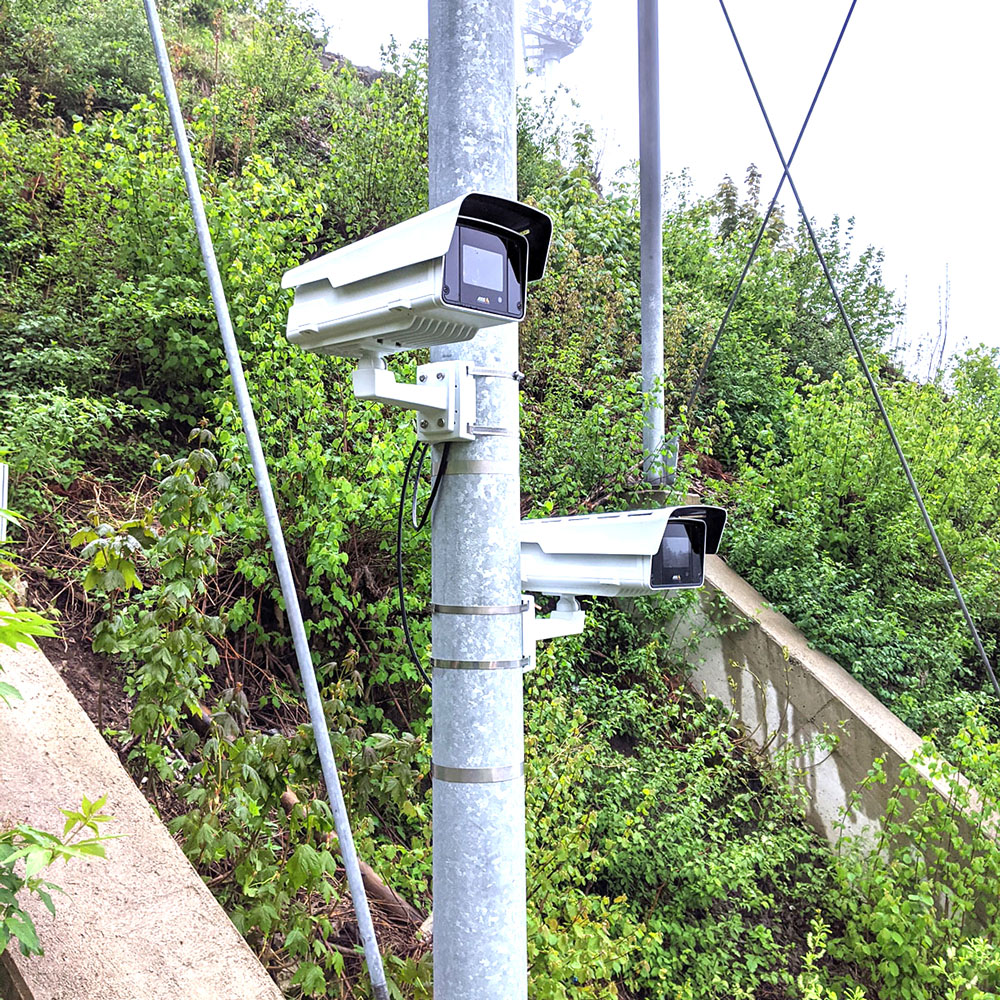

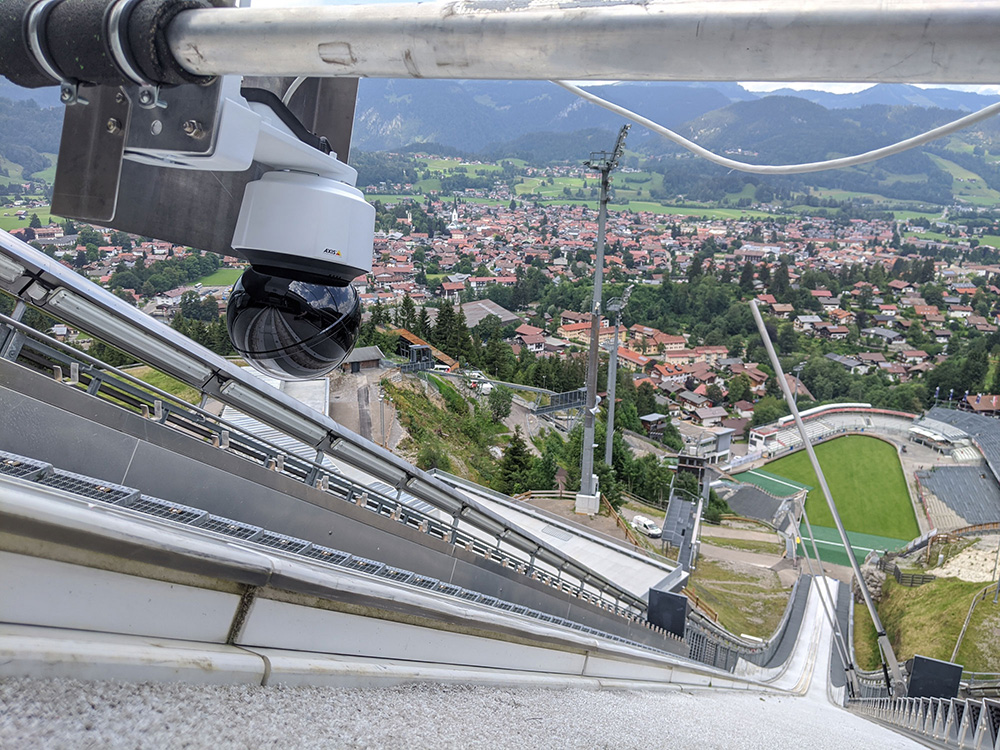

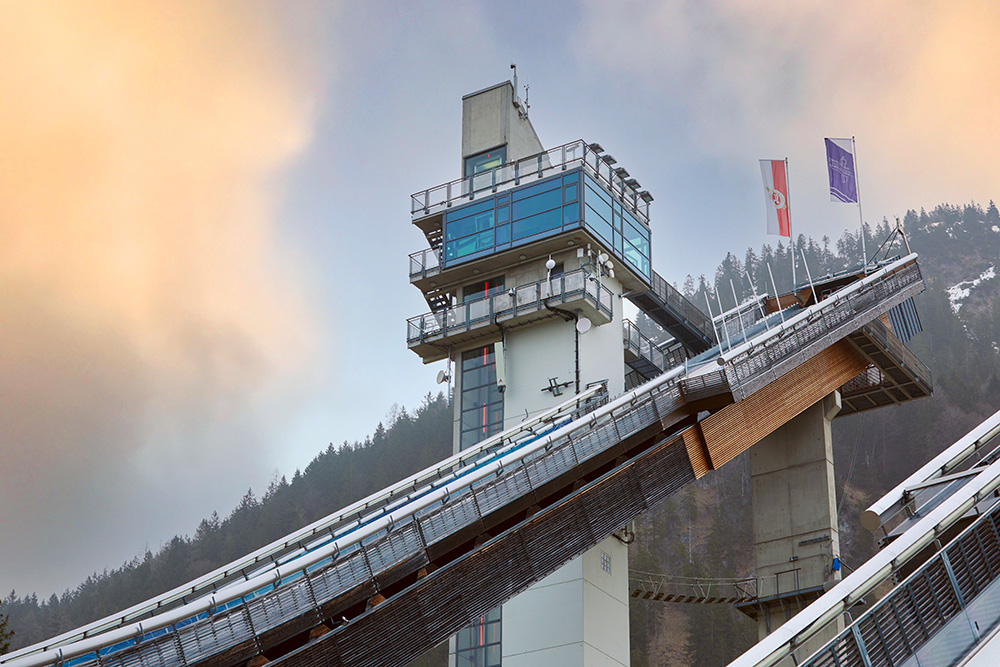
For optimization, video recordings of all phases of the jump are desirable in the best case. For this reason, eight and eleven cameras respectively were installed at the jumps in Oberstdorf at flight path height at close distances to each other. The cameras must be mounted parallel to the jumper.
Dr. Sören Müller has been at the IAT for years and is the head of the Ski Jumping/Nordic Combined section in the Department of Power Technology. The scientific institute, founded in 1992, functions as the central research unit for German top-level and junior high-performance sports, with its headquarters in Leipzig. In addition to ski jumpers, it supports another 1,000 or so athletes and their coaches from 19 summer and six winter sports. With their in-process training and competition research, the approximately 120 employees aim to optimize the performance potential of Germany’s top athletes. To this end, they develop measurement and information systems, among other things.
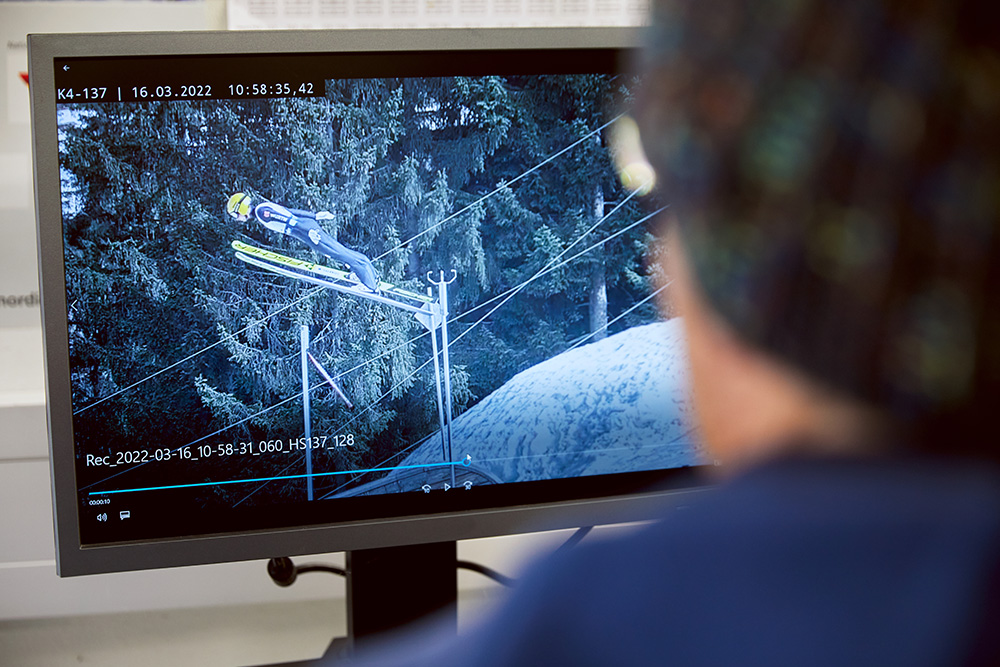
To help ski jumpers achieve more distance, Dr. Müller’s team envisioned a video analysis system. This should be able to take speed measurements and recordings of all relevant phases of a ski jump. The aim was to provide coaches and athletes with videos immediately after the jump via an information system. This was to provide effective support for training. In addition, the recordings were to be used to determine biomechanical analyses of body and ski posture in the form of angles of attack to the trajectory.
Film better – fly further
The ccc software gmbh from Leipzig came into play as the technology partner. As a medium-sized IT service provider and software developer, ccc software has been developing modern concepts and software products for various industries since 1990. In high-performance sports, for example, platforms and video systems are offered for training optimization and competition control. The corresponding multi-camera systems are each tailored to the individual requirements of customers.
Developed solutions for stationary installation, but also a mobile unit. In this scenario, the coach or sports scientist stands at the jump with a laptop. After giving the athlete the go-ahead to jump, the camera recording starts when the jumper passes through a photoelectric barrier. At the end of the jump, the video recording is automatically stopped and stored on a server. The trainer/sports scientist then receives an automatic montage of the lateral perspectives as a series of images or quasi-video after about 20 seconds. He is thus promptly informed about the progress of the jump and can give the athlete immediate feedback.
One of the challenges of such a solution is the very short signal duration. The cameras installed at the side of the downhill track and flight phase must finally trigger in time. The jumper rushes through the lane and jump at 90 to 100 kilometers per hour. To detect the signals, it is therefore imperative that the cycle times of the control system are less than 0.5 milliseconds. The communication time between the photoelectric barrier and the control system proves to be crucial, because the athlete is only in the picture for a very short time. The camera must therefore be triggered immediately so that a meaningful montage of the video sequences is possible afterwards.
And beyond that, weather resistance is of great importance. The control system must therefore comply with protection class IP68 and be resistant to cold. The control system and all other components should function reliably even at a temperature of -20 degrees Celsius.
Skiing with control
Based on the framework described, those responsible for PLCnext Control was chosen. In addition to the fast cycle time, the extended temperature range from -25 degrees Celsius to 60 degrees Celsius convinced those responsible. To the right of the control system, an Axioline F module with 16 digital inputs can be seen in the control box to receive the data forwarded by the cameras and pass it on to the control system. The individual components are wired using the tool-free Push-in connection technology.
Together with the University of Augsburg, the sports scientists have also developed an AI. This makes it possible to automate the flight analysis so that the decisive angles of body and ski to the flight path can be determined and displayed very quickly. These analyses enable coaches and athletes to take a close look at their technique and fine-tune the details that make the difference between victory and defeat.
Enough words and explanations, it’s getting serious. And for the scientist. After all, the ski flying competition is about to start on the Heini Klopfer ski jump. And there, Dr. Müller, his staff and his mobile measurement and analysis solution, which is even housed in a heated suitcase, are already eagerly awaited. Dr. Sören Müller now grabs it, smiles at our enthusiasm for the setting and contact, and signals: From now on, the athletes’ schedule sets the pace again.
